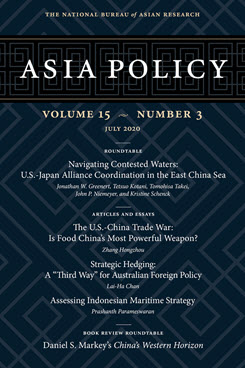China’s Response to U.S.-Japan Coordination in the East China Sea
This essay examines China’s interests, claims, and activity around the Senkaku Islands and assesses how Beijing might react to the U.S.-Japan alliance establishing a Standing Bilateral Joint Task Force in the East China Sea.
Executive Summary
MAIN ARGUMENT
Beijing’s claims to the Senkaku Islands (known as the Diaoyu Islands in China), along with its maritime entitlements, support the “China dream“ of a great rejuvenation—China’s goal to restore its national power and regional dominance. China closely monitors Japanese and U.S. actions in the East China Sea and has deployed instruments of national power such as military, paramilitary, diplomatic, information, legal, and economic measures to stake its claims. China’s response to increased U.S.-Japan coordination—for example, with the creation of a Standing Bilateral Joint Task Force—would hinge on several considerations, including political context, the scope of the charter, and how Beijing perceives changes to the status quo. Responses could range from diplomatic protest to economic retribution to dangerous military maneuvering. Increased U.S.-Japan military coordination would certainly continue to drive China’s long-term military buildup and modernization. As new technologies are introduced into its military service, China’s expanded options for responding to U.S.-Japan operations in the East China Sea will present new challenges for alliance management.
POLICY IMPLICATIONS
- As China continues to invest in naval power to protect its increasingly global interests, the prospect of maritime disputes will intensify. The U.S.-Japan alliance should prepare for a future of heightened tensions and look for ways to mitigate risk.
- China uses its maritime militia to increase pressure on Japan, in some cases leading to political negotiations. It uses provocative military operations to signal antipathy to larger strategic issues.
- The broader strategic context should shape how the U.S.-Japan alliance pursues increased military coordination. China’s claim to the Senkaku Islands supports the Chinese Communist Party’s pursuit of the China dream. A U.S.-Japan Standing Bilateral Joint Task Force may not deter China from continuing to use its many resources to assert its claims, but it may be necessary to bolster conventional military deterrence.
Kristine Schenck is a Strategy and Policy Analyst with the U.S. Department of Defense (United States).
About Asia Policy
Asia Policy is a peer-reviewed scholarly journal presenting policy-relevant academic research on the Asia-Pacific that draws clear and concise conclusions useful to today’s policymakers. Asia Policy is published quarterly in January, April, July, and October and accepts submissions on a rolling basis. Learn more


